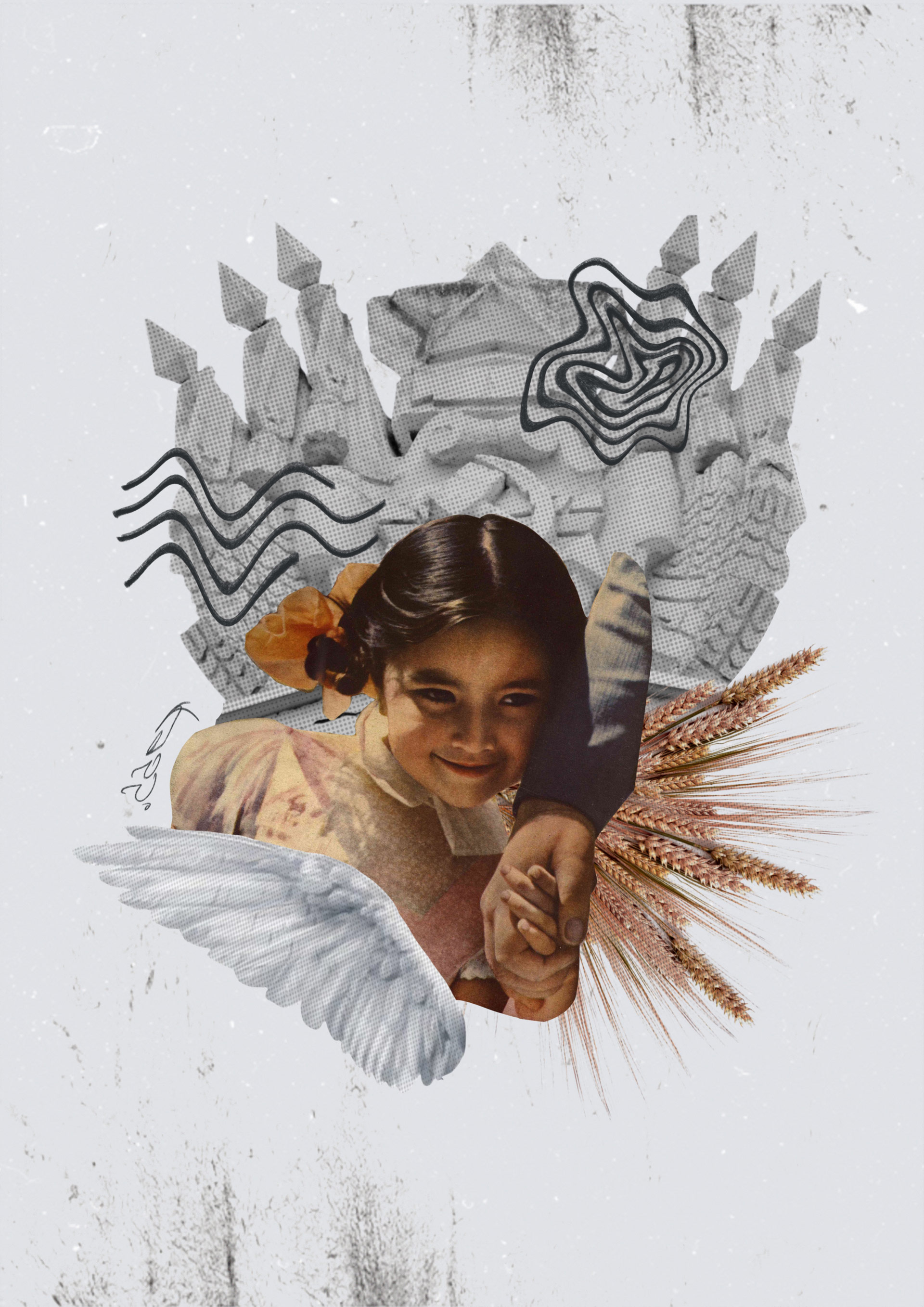Попова Нина Васильевна [р. 9(22).1.1908, Новохопёрск, ныне Воронежской области], советский партийный и общественный деятель. Член КПСС с 1932. Родилась в семье рабочего. С 1925 на комсомольской работе. С 1934 на советской и партийной работе в Москве. В 1945—57 секретарь ВЦСПС, одновременно в 1945—68 председатель Комитета советских женщин и вице-председатель Международной демократической федерации женщин. С 1957 председатель правления Всесоюзного общества культурных связей с заграницей (ВОКС), с 1958 председатель Президиума Союза советского обществ дружбы и культурной связи с зарубежными странами. Член Всемирного Совета Мира, Президиума Советского комитета защиты мира, Советского комитета солидарности стран Азии и Африки, Президиума Комитета советских женщин, Советского комитета за европейскую безопасность и сотрудничество. На 20-м съезде КПСС избиралась кандидатом в члены ЦК, на 22—24-м съездах членом ЦК КПСС. Депутат Верховного Совета СССР 3—9-го созывов. Международная Ленинская премия «За укрепление мира между народами» (1953). Награждена 2 орденами Ленина, орденом Октябрьской Революции, 4 др. орденами, а также медалями.

Но это была ликвидация неравенства женщин только по закону. Для действительного раскрепощения и равноправия женщины нужно было прежде всего создать реальные возможности для осуществления данного ей права на труд…[2]
Здесь стоит обратиться к другому расхожему мифу о партийных активистах в СССР — будто они не представляли реальное положение дел. Это очевидно не случай Нины Васильевны. Во-первых, в одном своем выступлении она завуалированно говорит о том, что женский вопрос в СССР еще не решен (важно, что его официально объявят проблемой позже), и совершенно прямо сообщает, что не все так уж хорошо:
Так, я уже установила, что Нина Васильевна принимала участие в декриминализации абортов в СССР в 1955 году, а также лоббировала изменение семейного кодекса 1944 года, который негативно сказался на положении женщин, так как запрещал признавать отцовство в случае рождения ребенка вне брака и вместе с тем усложнял процедуру развода. При этом основная сфера ее работы лежала на международной арене.
Комитет советских женщин — организация, созданная в СССР в 1941 для консолидации женщин всего мира в борьбе с нацизмом, после войны продолжила свою деятельность: выстраивала отношения с женскими организациями по всему миру, представляла СССР на международных мероприятиях и организациях, поддерживали и распространяли положительный образ советского проекта женской эмансипации.
Комитет финансово поддерживал коммунистические и деконолониальные (женские) движения. О том, что он был заметной фигурой, свидетельствуют переписки и стенограммы встреч с представителями разных организаций, которые просили о поддержке (например, суданский марксистский журнал «эль-Гайфидя» (1957) или антирасисткая женская инициатива Великобритании (1949)). Также Комитет учредил специальную стипендию для девушек из новых независимых стран для обучения в СССР, которая покрывала не только стоимость жизни, но и авиабилеты. Как показала Яна Кнопова, эта стипендия сыграла большую роль для развития левого арабо-еврейского женского движения «Танди». Комитет также поддерживал активисток из развивающихся стран в их посещении международных событий. Кроме того, он помогал активисткам и их детям получить путевки в советские санатории и пионерлагеря.
Я хотела бы обратить внимание на незначительную деталь — оплату билета до места обучения, мелочь, которую сегодня почти невозможно найти в стипендиальных программах — за ней стоит очевидное желание воплотить на практике эгалитарный принцип. В архиве уже другой организации и при других обстоятельствах я встретила выступление Нины Васильевны в пользу того, что надо обязательно оплачивать дорогу и прочие расходы, так как иначе смогут «принять участие фактически лишь состоятельные люди».
Такие мелочи меня больше всего цепляют в образе Поповой — она не для позы и публики, а во внутренних документах проявляет заботу об активистках и соратницах: «МДФЖ<см. МДФЖ, Нина Попова была ее вице-президентом 1945-1968> необходимо экономнее относиться к бюджету и иметь возможность оказывать материальную помощь ее активным деятельницам в момент большой нужды. Во всяком случае, считает Н.В. Попова, деятельницы МДФЖ должны быть уверена, что им смогут оказать помощь, когда возникнет крайняя необходимость.»
Понятно, что таким образом советское правительство заручалось поддержкой на международной арене. Но кто в этом мире дает деньги на что-то, противоречащее их собственным интересам? Мне важно здесь, что мой университет, например, не беспокоится, как я до него доберусь и на какие средства я подам на вид на жительство, чтобы в нем учиться. А это, согласитесь, важно. Как и то, на какие ресурсы я пишу этот текст.
Пример Нины Васильевны, мне кажется, позволяет поразмышлять над тем, кто такая «советская женщина»: приводил ли официальный эмансипаторный дискурс к эмпаурменту, а социалистические убеждения к большей чуткости в вопросах неравенства.
Eve Kosofsky-Sedgwick, “Paranoid Reading and Reparative Reading, Or, You’re So Paranoid, You Probably Think This Essay Is About You.,” in Touching Feeling: Affect, Pedagogy, Performativity. (Durham and London: Duke University Press, 2003), 150-151.
Nina Popova, Equality of the Soviet Women in the Economy [Ravnopravie Sovetskyh Zhenschin v Ekonomicheskoy Oblasti] (Moscow: Izdatelstvo literatury na inostrannyh yazykah, 1956), 10.
Nina Popova, Equality of the Soviet Women in the Economy [Ravnopravie Sovetskyh Zhenschin v Ekonomicheskoy Oblasti] (Moscow: Izdatelstvo literatury na inostrannyh yazykah, 1956), 10.
Nina Popova, On the Role of Women in the Socialist Society [O Roli Zhenschin v Socialistischeskom Obschestve] (Moscow, 1967), 75.
Nina Popova, Equality of the Soviet Women…, 31.


Popova Nina Vasilievna [born. 9 (22) .1.1908, Novokhopyorsk, now Voronezh
Region] was a Soviet party member and a public figure. Member of the CPSU since 1932.
She was born into a working-class family. In 1925 she started working in Komsomol. From 1934, she was involved in Soviet and party work in Moscow. From 1945 to 1957 Popova was the Secretary of the All-Union Central Council of Trade Unions; at the same time, in 1945-1968 she was the Chairwoman of the Soviet Women's Committee and the Vice Chairwoman of the International Democratic Federation of Women (WIDF). Since 1957 she has been a Chairwoman of the Board of the All-Union Society for Cultural Relations abroad (VOKS). From 1958 she was Chairwoman of the Presidium of the Union of Soviet Societies of Friendship and Cultural Ties with foreign countries. Popova was a member of the World Peace Council, Presidium of the Soviet Peace Committee, and the Soviet Committee of Solidarity of Asian and African Countries, the Presidium of the Soviet Women's Committee, the Soviet Committee for European Security and Cooperation. At the 20th Congress of the CPSU, she was elected as a Candidate Member of the Central Committee, at the 22-24th Congresses, she became a member of the CPSU Central Committee. She was a deputy of the Supreme Soviet of the USSR of the 3rd - 9th convocations. Popova received the International Lenin Prize “For strengthening peace among nations” (1953). She was awarded two Orders of Lenin, the Order of the October Revolution, and four other orders and medals.

It is worth referring to another common myth about Party activists in the USSR - as if they did not represent the real state of affairs. This was obviously not the case of Nina Vasilievna. Firstly, in one of her speeches, she covertly says that the women's question in the USSR had not yet been resolved (it is important to note that it will be officially declared a problem later), and quite bluntly informs that not everything is so good:
So, I have already mentioned that Nina Vasilievna took part in decriminalizing abortion in the USSR in 1955, and she also lobbied for a change in the Family Code of 1944, which negatively affected the situation of women, since the Code forbade recognizing paternity in the event of a child being born outside of marriage. Moreover, the Code complicated the procedure for divorce. At the same time, the main area of Popova’s work was established in the international arena.
The Committee of Soviet Women, an organization created in the USSR in 1941 to consolidate women worldwide in the fight against Nazism, continued its activities after the war. The Committee built relationships with women's organizations worldwide, represented the USSR at international events and organizations, supported and spread a positive image of the Soviet project of women's emancipation.
The Committee financially supported the communist and decolonial (women's) movements. The fact that the Committee was a prominent organization is evidenced by the correspondence and transcripts of meetings with representatives of various organizations that asked for support (for example, the Sudanese Marxist magazine El Gayfidya (1957), or the British Anti-Racist Women's Initiative (1949)). The Committee also established an outstanding scholarship for girls from newly independent countries to study in the USSR. The scholarship covered not only the living costs but even airplane tickets. As Yana Knopova showed, this scholarship has played an essential role in developing the left Arab-Jewish women's movement "Tandi". The Committee also helped activists from developing countries to attend international events and get vouchers to Soviet sanatoriums and pioneer camps.
I would like to draw your attention to an insignificant detail - paying for a ticket to the place of study, a trifle that today is almost impossible to find in scholarship programs - behind it; there is an apparent desire to translate into practice the egalitarian principle. In the archive of a different organization and under different circumstances, I found Nina Vasilievna's speech in favor of the fact that it is necessary to pay for travel and other expenses, since otherwise "only wealthy people will be able to take part."
These little things catch my attention the most in Popova's image: she is not for a pose and the public but in the internal documents. This shows Popova's concern for activists and allies: WIDF (Nina Popova was its [Soviet Women's Committee] Vice President 1945- 1968) needed to save the budget and be able to provide material assistance to its active workers at the time of need. In any case the WIDF activists were to be sure that they can be helped when extreme necessities arise.
Clearly, in this way, the Soviet government enlisted support in the international arena. But who in this world gives money for something contrary to their interests? Here, it is essential for me that, for example, my university is not concerned with how I get to it and how I will apply for a residence permit application. And this is important, just like the resources with which I am writing this text.
Nina Vasilievna's example, as it seems to me, allows us to reflect on who is a "Soviet woman": did the official emancipatory discourse lead to empowerment, and did the socialist beliefs lead to a greater sensitivity in inequality issues?
Eve Kosofsky-Sedgwick, “Paranoid Reading and Reparative Reading, Or, You’re So Paranoid, You Probably Think This Essay Is About You.,” in Touching Feeling: Affect, Pedagogy, Performativity. (Durham and London: Duke University Press, 2003), 150-151.
Nina Popova, Equality of the Soviet Women in the Economy [Ravnopravie Sovetskyh Zhenschin v Ekonomicheskoy Oblasti] (Moscow: Izdatelstvo literatury na inostrannyh yazykah, 1956), 10.
Nina Popova, Equality of the Soviet Women in the Economy [Ravnopravie Sovetskyh Zhenschin v Ekonomicheskoy Oblasti] (Moscow: Izdatelstvo literatury na inostrannyh yazykah, 1956), 10.
Nina Popova, On the Role of Women in the Socialist Society [O Roli Zhenschin v Socialistischeskom Obschestve] (Moscow, 1967), 75.
Nina Popova, Equality of the Soviet Women…, 31.